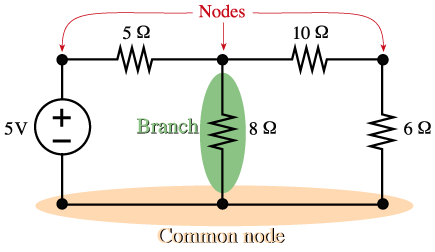Classification of Electric Circuits
Electric circuits
are classified into three general circuit
classifications:
- Series
- Parallel
- Series-parallel
Circuit and Network
Topology
The elements of an electric circuit may
be interconnected in several ways. Accordingly
we need to understand some basic concepts
of network topology. Importantly, is to
differentiate between a circuit and a network.
A network may be regarded
as an interconnection of elements or devices,
whereas a circuit is a network providing
one or more closed paths.
In network topology, we
study the properties relating to the placement
of elements in the network and the geometric
configuration of the network. Such elements
include branches, nodes, and loops.
-
A branch represents
a single element such as a voltage source
or a resistor.
-
A node in an electrical
circuit is a point at which two or more
circuit elements are joined together.
It is usually indicated by a dot in
a circuit.
-
A loop is any closed
path in a circuit.
The circuit in Figure 7.3 has five branches
and four nodes.

Figure 7.3 Circuit
with branches, nodes, and loops.
A network with b
branches, n
nodes, and l
independent loops will satisfy the following
relationship of network topology:
A network that contains an active element,
such as an independent voltage or current
source, is called an active network.
A network that does not contain active elements
is a passive network.
|